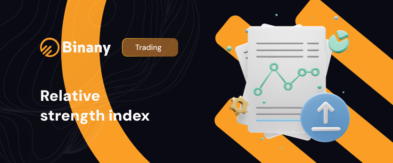Best Trading Strategies: Successful Trading Plan in the Financial Market
Trend-following strategies involve identifying and trading in the direction of the prevailing market trend. Traders use indicators such as:
- Moving Averages (MA) – Helps to smooth price data and detect the market trend.
- Relative Strength Index (RSI) – Measures the strength of a trend.
- Bollinger Bands – Identifies volatility and potential price breakouts.
💡 Example: A trader might use a 50-day moving average crossing above a 200-day moving average as a signal to buy.
Trading Styles, Risk Management, and Building a Trading Strategy for Stocks
Mean reversion is based on the assumption that prices will return to their historical average over time. This strategy works well in range-bound markets, where traders look for overbought and oversold conditions.
Key indicators used:
- Bollinger Bands – Determines price deviation from the mean
- Stochastic Oscillator – Identifies momentum shifts
Breakout Trading Strategies: Trading Opportunities & Momentum Trading
Breakout traders look for price movements that break through established support and resistance levels. This often signals increased volatility and strong momentum in a particular direction.
Popular breakout techniques include:
- Chart patterns (e.g., triangles, flags, and head-and-shoulders)
- Volume analysis – A breakout with high volume confirms strength
Trading Strategies for Beginners: Trading Method for Short-Term Forex Market Success
Scalping involves making multiple trades within short timeframes, often seconds or minutes. Traders capitalize on small price fluctuations and use high leverage to maximize returns.
Common scalping indicators:
- Exponential Moving Averages (EMAs) – Identifies short-term trends
- MACD (Moving Average Convergence Divergence) – Detects momentum shifts
Scalping requires low trading fees and high-speed execution, which is why traders prefer platforms with efficient order execution.
Developing a Trading Strategy Based on Popular Trading Methods and Taking Advantage of Trading Opportunities
Swing traders hold positions for days to weeks to profit from medium-term price movements. They use both technical and fundamental analysis to identify trading opportunities.
Common tools used in swing trading:
- Fibonacci retracement – Identifies key price levels for entry/exit
- Support and resistance levels – Defines optimal trade zones
Successful Trading Strategy: Popular Trading Strategies, Financial Instruments, and Automated Trading
To develop a profitable trading strategy, traders should focus on the following:
- Market Analysis: Understanding macroeconomic trends, price action, and news impact
- Risk Management: Using stop-loss and take-profit levels to minimize risks
- Backtesting: Testing strategies using historical data before applying them in live markets
- Trading Psychology: Managing emotions like fear and greed to maintain discipline
How Successful Strategies Are Based on Market Analysis and Why Trading Requires Discipline
To create a trading strategy tailored to your goals, follow these steps:
- Define Your Objectives: Are you a short-term or long-term trader?
- Choose a Market: Forex, stocks, crypto, or commodities?
- Select a Strategy: Trend-following, scalping, or breakout trading?
- Use Indicators Wisely: Avoid overcomplicating your strategy.
- Test Your Strategy: Use backtesting and paper trading before going live.
Why Trader Should Master Option Trading Strategies?
A well-structured trading strategy is essential for consistent success in the financial markets. A solid trading strategy includes clear entry and exit points, risk management rules, and an adaptable approach similar to technical trading methods. Since a trading strategy involves careful planning and discipline, every trader should know the importance of aligning strategies with their goals.
There are trading strategies that every trader must be familiar with, including trend following, momentum trading, and range trading, which is popular among intraday traders. A trading style can change based on market conditions or personal investment objectives, and choosing a strategy that will take advantage of the right opportunities is key. Some approaches, such as swing trading, are considered a medium-term strategy, while others focus on shorter trading cycles.
When it comes to trading, it’s crucial to select tactics with regard to the specific investment and asset class. Building flexibility into your plan ensures you can cover a broad range of trading opportunities and better navigate dynamic market environments.
Ready to take your trading to the next level?
FAQ
Which is the best trading strategy?
There is no single best trading strategy that suits everyone, because one person’s strategy might not work for another. The choice depends on the trader’s goals, experience, and the type of market they are trading in, such as forex trading or future markets. Popular options include trend trading strategy, range trading, and quantitative trading. An effective strategy usually combines technical indicators, trading signals, and solid trading decisions, often recorded in a trading journal to track performance and continuously boost your trading activities.
What are the 4 trading strategies?
The main trading strategies commonly recognized are:
- Trend trading strategy – a strategy that seeks to take advantage of strong market movements in one direction over a period.
- Range trading – popular among traders who buy and sell within a tight trading range, often using technical trading techniques.
- Fundamental trading strategies – where trading decisions are based on economic data, earnings reports, and other fundamental factors.
- High-frequency trading – a trading system where several strategies are executed automatically using algorithms over very short trading periods.
These types of trading strategies help traders adapt to different trading opportunities in the market depending on their preferred trading style and risk tolerance.
What is the 3-5-7 rule in trading?
The 3-5-7 rule in trading refers to a guideline for making trading decisions based on trading ratios and timeframes. It suggests that you assess a position within 3 minutes, 5 minutes, or 7 minutes, especially useful in successful intraday trading or intraday trading environments. This trading approach helps in quickly adjusting trading positions based on technical trading strategies, ensuring you put your strategy into action efficiently. It is particularly useful in volatile markets like forex trading and trading options.
What is the 90% rule in trading?
The 90% rule suggests that 90% of trading activities come from making trading decisions related to entry and exit strategy rather than picking stocks or financial instruments themselves. In other words, trading is a strategy where success relies heavily on discipline, risk management, and execution rather than market selection alone. Most trading strategies rely on clear plans — whether based on technical analysis, technical indicators, or fundamental analysis — and effective trading costs control to ensure profitability. In essence, strategies are based on either technical or fundamental factors, but proper management defines the final outcome.













